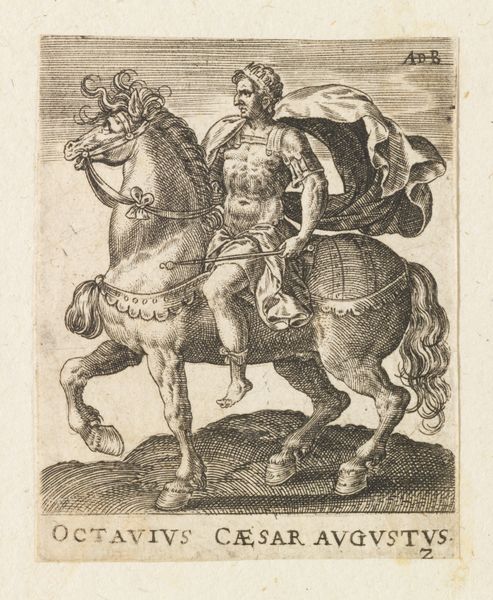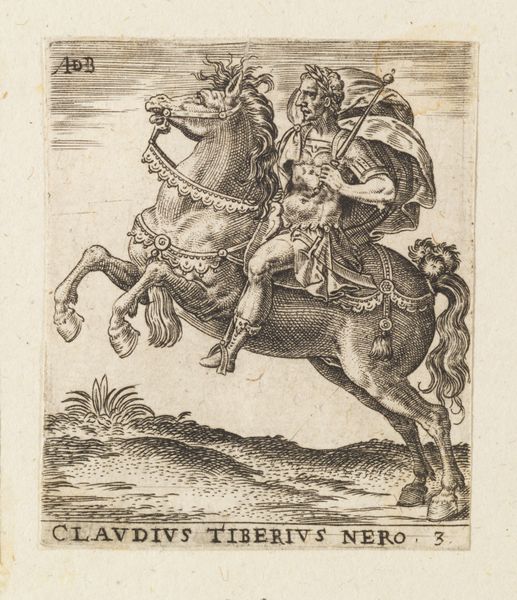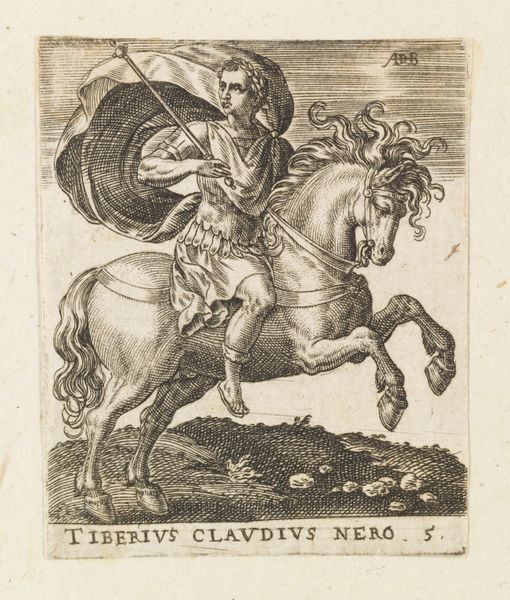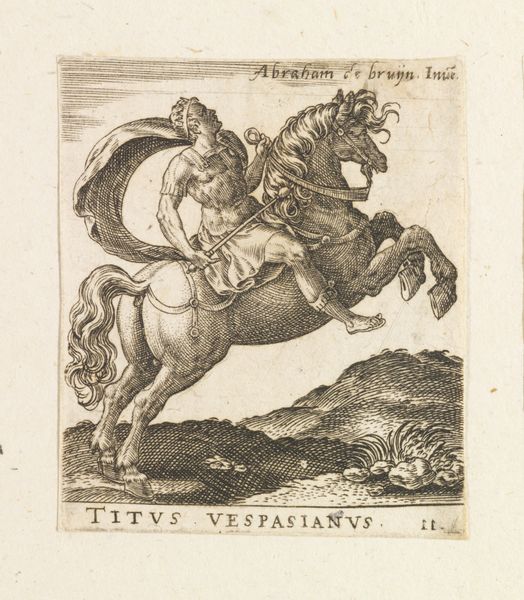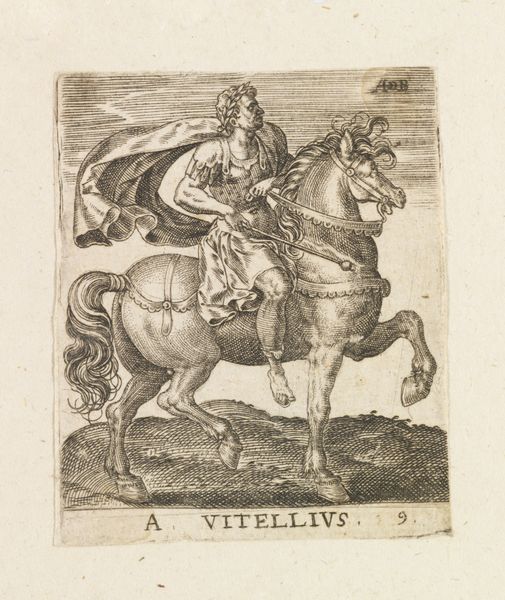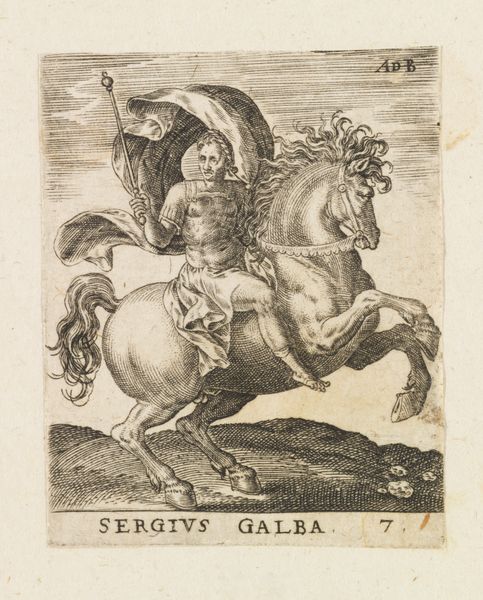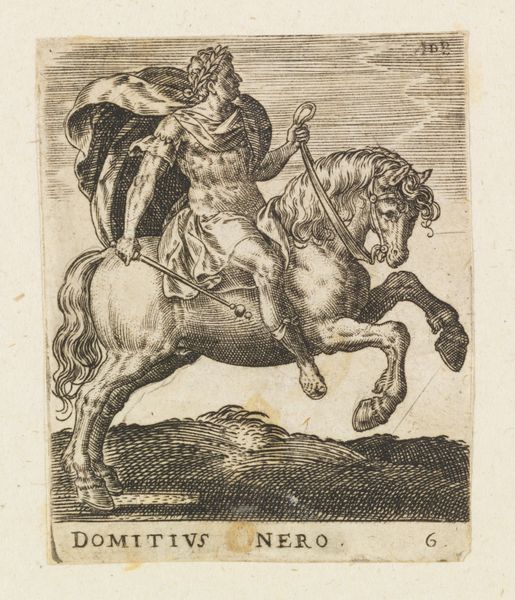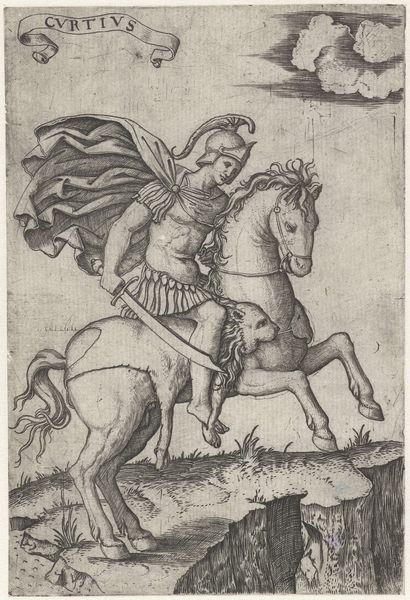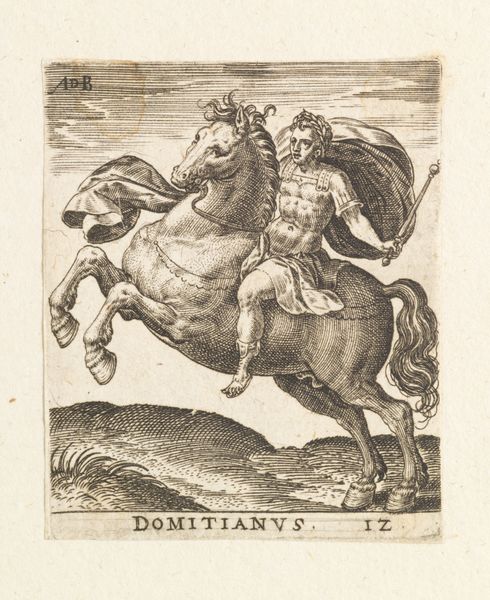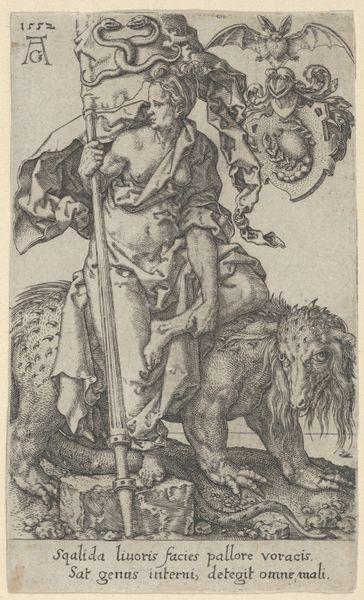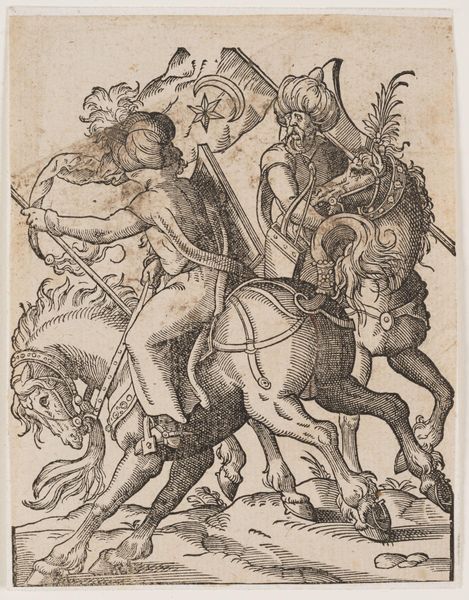
M. Silvius Otho, from "Twelve Caesars on Horseback" 1560 - 1592
0:00
0:00
drawing, print, engraving
#
portrait
#
drawing
# print
#
figuration
#
form
#
11_renaissance
#
horse
#
history-painting
#
engraving
Dimensions: Sheet: 2 5/16 × 1 15/16 in. (5.9 × 4.9 cm)
Copyright: Public Domain
This small print of M. Silvius Otho, part of Abraham de Bruyn's "Twelve Caesars on Horseback," was created in the late 16th century using engraving. Look closely, and you'll see the texture is created through fine lines cut into a metal plate, which then holds ink to make the print. Think of it as a very precise kind of carving. The effect is graphic and precise. In de Bruyn’s time, printmaking was essential for circulating images and ideas widely. This particular series speaks to the era's fascination with classical history and leadership. The choice of engraving - a process demanding skill and patience - suggests the value placed on precision and detail. The medium mirrors the message: leadership, etched in time. So, as you consider this print, think about the labor and skill involved, and how it connects to the themes of power and history it represents. It’s a reminder that even small objects can carry significant cultural weight.
Comments
No comments
Be the first to comment and join the conversation on the ultimate creative platform.
